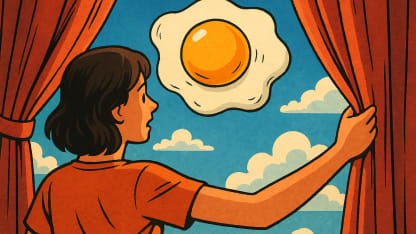3-Pack: Huggie Earrings with Swarovski Crystals





Our Take
- 3 pairs of earrings with certified Swarovski crystals- One pair for every occasion – yellow gold for when you’re feeling flirty, rose gold for when you’re feeling confident, and stainless steel for fem-Colossus cosplay- You might buy this as a gift for a recent grad, for yourself as a pat on the back, or for a fem-Colossus cosplayer in your life- Huggie refers to the style that looks like this, not the diaper brand- Model: 944-031-E-SW, 944-032-E-SW, 944-033-E-SW (Sounds more like something a submarine navigator would yell across the tense cockpit in a Tom Clancy novel than a model number for earrings, but could be worse)
Three Pair Or Not Three Pair?
Not sure about this whole Swarovski Crystals game? Here’s our pitch: If you’re not looking to spend a bunch on diamonds or buy cheap-looking costume jewelry, this is your best bet. How often does a brand become a household name by selling replicas? Swarovski is tops in the faux-diamond shiny-things world. The real question is: What’s the grammatically correct way to describe these earrings? Meh writer @skemmehs here. I had two questions for the internet today and failed to get a straight answer to either. The first regarded these huggie-style earrings with Swarovski Elements. No, I wasnt trying to figure out what huggie-style earrings are thats easy. Nor what Swarovski Elements are thats also easy.The first thing I wanted to know was whether, when describing multiple pairs of objects, to use pair or pairs as the plural. That is, should these be described as 3 pairs or earrings or 3 pair of earrings. The latter has an old-fashioned ring to it that I like, but is it correct? Turns out nobody can agree.The Oxford Dictionary of American Usage and Style makes no bones about it:>Pairs is the singular noun pairs the plural.Its not complicated, says the OED. But ol Merriam-Webster aint so sure:>The usual plural is pairs, when there is no preceding number or indicator of number (as several).>When a number or indicator of number precedes pair, either pair or pairs may be used.So when describing 3 sets of earrings we can use either pair" or pairs"? The American Heritage Guide To Contemporary Usage and Style sort of agrees:>The noun pair can be followed by a singular or plural verb. The singular is always used when pair refers to a set considered as a single entity: This pair of shoes is on sale. A plural verb is used when the members are considered as individuals: The pair are working more harmoniously now. After a number other than one, pair itself can be either singular or plural, but the plural is now more common: She bought six pairs (or pair) of stockings.So the answer is pair or either ‘pair’ or ‘pairs’ or usually ‘pair’. Thanks, internet.The answer to the other question got even more complicated. As previously mentioned, Ive been in Japan for a few weeks and have noticed something (especially) odd. A surprising number of young women can be seen wearing medical eye patches. Not, like, a pirate eye-patch, but a bandage that has been taped or strapped to their face. So I asked the internet about it.A Redditor was similarly puzzled and received this most-upvotted response:> I think it’s simply Japanese doctors recommend/prescribe eye patch wearing more commonly for eye problems than other places.Yes, so simple. And apparently only women suffer from whatever malady this treatment is being prescribed for. A Japanese goods store (I wouldnt describe that link as 100% SFW) selling eyepatches starts by supporting the medical argument in the product description:> Almost everyone has an eye infection or disease at some point in their life, and for that reason eye patches are a common sight.Really? Because Ive never had an eye infection nor do I recall anybody I know having one. But it goes on:>Recently eye-patches have become a staple in anime culture as well, with eye patch wearing characters appearing in Chunibyo demo Koi ga shitai (aka Chu2koi) Neon Genesis Evangelion, Battle Vixens, Lone Wolf and Cub, Fullmetal Alchemist, Bleach, D.Gray Man and others, where an eye patch adds something mysterious and distinctive to the character.Now were getting somewhere. But the woman who just sold me an egg salad sandwich at the convenience store downstairs was wearing one. Am I to believe that shes cosplaying at work?Another site suggests:>These women arent seeking medical attention, they are dressed in this way to attract men with this fetish style known as Kegadoru, which translates to Injured Idols. Young Japanese girls seductively cover their bodies in bandages, with head-wraps and eye patches on the streets of Akihabara where they regularly receive compliments from men about how cute they look. White bandages represent virginity and chastity while black bandages represent wickedness.Im starting to lose my mind. So the egg salad sandwich girl was trying to attract me by looking injured? At least weve figured out that the eyepatch isnt for some kind of medical thing, right?https://d2b8wt72ktn9a2.cloudfront.net/mediocre/image/upload/v1495537134/ut3decjpsy85tv9tgamo.pngOh come the where did they even get that idea?https://d2b8wt72ktn9a2.cloudfront.net/mediocre/image/upload/v1495538116/tvg1wr3ugtosqwyepavq.pnghttps://d2b8wt72ktn9a2.cloudfront.net/mediocre/image/upload/v1495538046/eh6uydgzhpcysnohzyk2.pngSo this is just something that angsty teens are doing?https://d2b8wt72ktn9a2.cloudfront.net/mediocre/image/upload/v1495537309/mw32yaxcmlldos7h7q9a.pngOh my god this thing goes all the way to the top. Im in deep waters now. If youll excuse me, Im going to clear my browser history. What were we talking about? Oh yeah, buy these earrings.










